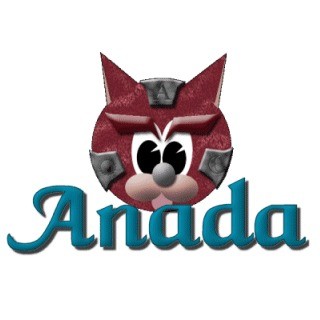Copy Link
Add to Bookmark
Report
AIList Digest Volume 5 Issue 267

AIList Digest Friday, 13 Nov 1987 Volume 5 : Issue 267
Today's Topics:
AI Tools - Source Libraries & Object-Oriented Databases,
Binding - Michael O. Rabin,
Neuromorphic Systems - References,
Pattern Recognition - Character Recognition,
Education - Brain Science Programs,
Law - Who Owns the Output of an AI?
----------------------------------------------------------------------
Date: 9-NOV-1987 10:44:40 GMT
From: POPX@VAX.OXFORD.AC.UK
Subject: Source Libraries
From Jocelyn Paine
St Peter's College
New Inn Hall Street
Oxford OX1 2DL
I was pleased to read in AIList Bulletin V5 #260, Robert Futrelle's proposal
to set up a net-accessible National Resource Centre of public domain AI
software. I teach AI in Prolog to undergraduates at Oxford University; it's
very hard to obtain source code (whether in Prolog or Lisp) for many of the
"landmark" programs which occur in textbooks: GPS, Analogy, Talespin, AM, Sam,
and so on. Published descriptions just don't give enough information for me to
re-implement these programs from scratch.
In saying this, I agree very much with Seth (sas@bfly-vax.bbn.com)'s comments
in AIList V5 #257:
> The current lack of reproducibility is appalling. We have a
> generation of language researchers who have never had a chance to play
> with the Blocks World or and examine the limitiations of TAILSPIN.
> It's as if Elias Howe had to invent the sewing machine without access
> to steel or gearing. There's a good chance he would have reinvented
> the bone needle and the backstitch given the same access to the fruits
> of the industrial revolution that most AI researchers have to the
> fruits (lemons) of AI research. Anecdotal evidence, which is really
> what this field seems to be based on, just doesn't make for good
> science.
I have considered setting up a library of such programs, which I'd send to
anyone who can be reached from the British Academic Network (Janet). Before
distributing these programs to others, I would test-run them to check that
they conform to a reasonable standard (I'd have to limit this to Prolog
programs, since I don't know enough about Lisp implementations to know what
features are undesirably non-standard). I'd test them for conformance to
Edinburgh syntax and predicates, by running under VAX/VMS Poplog Prolog). I
would also check to see that the instructions for running are correct.
Anyone want to help?
------------------------------
Date: Fri, 6 Nov 87 05:49 PST
From: nesliwa%nasamail@ames.arpa (NANCY E. SLIWA)
Subject: Public dissemination of AI software
Just a note in response to recent board postings about the desireability
of having research software made available to other researchers for
duplication of experiments and for extensions to programs: NASA has been
required to do that all along, and that is probably true of most other
government labs (other that sensitive military work). NASA's software
clearinghouse is COSMIC, associated with the University of Georgia, and
all software is available for a minimum fee which covers dissemination
costs. Although most of COSMIC's library is more aerospace-science
related, there has been some interesting AI research in NASA in recent
years, and researchers are *strongly encouraged* to submit all
programs (with documentation and research papers) to COSMIC.
More information about COSMIC (and a catalog of available software) is
available from:
COSMIC
112 Barrow Hall
The University of Georgia
Athens, Georgia 30602
(404)542-3265
Nancy Sliwa
NASA Langley Research Center
nesliwa%nasamail@ames.arpa
nancy@grasp.cis.upenn.edu
------------------------------
Date: 10 Nov 87 16:25:34 GMT
From: cos!hqda-ai!merlin@uunet.uu.net (David S. Hayes)
Subject: Re: object oriented database query
A very nice object-oriented database is produced by Graphael
(a French company). This system supports text, and numbers, and
mouse-sensitive graphics, and sound, and digitized pictures as
part of the database. IE, your entry for Company X can include a
streetmap of their area. Alternatively, a floorplan of your
building can be mouse-sensitive. Mouse on some office, and the DB
can tell you who works there.
This software runs on Symbolics Lisp Machines, and some
others I can't recall right now. Their US contact is:
Eric Sansonetti, National Sales Manager
Graphael, Inc.
255 Bear Hill Road
Waltham, MA 02154
Phone: 617-890-7055
--
David S. Hayes, The Merlin of Avalon PhoneNet: (202) 694-6900
UUCP: *!uunet!cos!hqda-ai!merlin ARPA: ai01@hios-pent.arpa
------------------------------
Date: 10 Nov 87 16:07:05 GMT
From: uh2%psuvm.bitnet@ucbvax.Berkeley.EDU (Lee Sailer)
Subject: Re: object oriented database query
The ACM journals and SIG newsletters on Data Base and Office Info Systems
often have stuff about Object Oriented Database management.
Typically, the O approach is most useful when the world be
modeled is object like. For example, consider building a database to
manage geographic info for a city the size of New York. Support
queries like "What offices are within 15 minutes of the UN building?"
or "Whose view will be blocked by a 200 stofry building at 5th and
Broadway?"
Likewise, systems for managing blueprints, specifications, and
change requests in a manufacturing environment profit immensly
from Object orientations.
lee
------------------------------
Date: Mon, 9 Nov 87 11:59:39 EST
From: rapaport@cs.Buffalo.EDU (William J. Rapaport)
Subject: Michael O. Rabin
He is Professor of CS at Harvard and also Hebrew University--very well
known.
John
------------------------------
Date: 5 Nov 87 16:53:00 GMT
From: necntc!adelie!mirror!ishmael!inmet!justin@husc6.harvard.edu
Subject: Re: references for adaptive systems
/* Written 12:36 pm Nov 2, 1987 by oppy@unrvax.UUCP in inmet:comp.ai */
/* ---------- "references for adaptive systems" ---------- */
The direction i wish to go with this is toward learning systems,
equivalences in the way computers and biological organisms learn.
brian oppy (oppy@unrvax)
One of my former professors, a Richard Alterman of Brandeis University
(Waltham, MA) was doing some interesting work in that direction when last
I spoke to him. You might look him up.
-- Justin du Coeur
------------------------------
Date: 9 Nov 87 04:15:31 GMT
From: ihnp4!homxb!mtuxo!mtgzz!drutx!clive@ucbvax.Berkeley.EDU (Clive
Steward)
Subject: Re: Character recognition
in article <641@zen.UUCP>, vic@zen.UUCP (Victor Gavin) says:
>
>
> I have been puttering about for the past few weeks with an HP ScanJet (one
> of those 300dpi digitizers). I have been asked to write some software which
> can (given an image produced by the scanner) reproduce the original text of
> the paper in a machine readable form.
> If someone has already tackled this problem, any help I can get will be much
> appreciated.
>
Yes, there's some software for the Macintosh which is purported to do
just this, with text. Presumably, like other such systems, it's
pretty much confined to non-proportional fonts. Since numbers are
often non-proportional even in otherwise proportional fonts so that
columns will look right, this sounds like it would do your job.
There's at least one package which purports to do this; it's called
Read-it!, said to be for 'popular' scanners, which presumably includes
all the 300 dpi ones as well as Thunderscan etc. which can do more.
It was apparently demo'ed in 'pre-release form' at MacWorld Expo in August.
It's from:
Olduvai Software, Inc.
6900 Mentone
Coral Gables, Florida 33146
USA
Phone (305) 665-4665
They list it in the September MacUser ad for $295 list. Reading that,
I find they say it works on "including AST Turboscan, Microtek, Abaton 300,
MacScan, LoDown, Spectrum, Datacopy, Dest, etc." "Type tables form
most popular typewriter and LaserWriter fonts are included, or you can
use it's unique "learning mode" to teach it to recognize an unlimited
number of fonts, includeing foriegn and special characters." (sic).
They also say, "Read-It TS, a special version of Read-It! optimized
for the Thunderscan is also available" $149.00 list. But though I
have and like Thunderscan, I don't know that it's what you want for
high volume. It's 1/10 the price, and 1/10 the speed, though often
with better looking results for pictures.
Good Luck!
And if you get it and have results, would appreciate mail to see what
it's like; probably others would like a posting too!
Clive Steward
------------------------------
Date: 11 Nov 87 15:43:43 GMT
From: steinmetz!stern@uunet.uu.net (harold a stern)
Subject: Re: Brain Science Programs
In article <653@wheaton.UUCP> johnh@wheaton.UUCP (John Doc Hayward) writes:
>
>What CS courses are offered in Colleges and Universities which
>are part of an undergraduate 'Brain Scince' program?
>Are the courses taught by CS faculty either individually or
>team taught with members of different discipline?
>What prerequisites in CS would be required for courses. What
>does the 'program' consist of?
The following are (roughly) the requirements for MIT's program in "Brain and
Cognitive Sciences". Courses marked (EECS) are offered by the Department of
Electrical Engineering and Computer Science; those marked (BCS) are offered
by the Department of Brain and Cognitive Sciences; and those marked (LP) are
offered by the Deparment of Linguistics and Philosophy.
1) Introduction to Cognitive Science (BCS)
2) Logic I (LP)
3) Introduction to Algebraic Systems (EECS)
4) Automata, Computability, and Complexity (EECS)
four of the following six:
4) The Study of Language (LP)
5) Cognitive Processes (BCS)
6) Structure and Interpretation of Computer Programs (EECS)
7) Neuroscience and Behavior (BCS)
8) Perceptual Information Processing (BCS)
9) Minds and Machines (LP)
and four additional courses selected from approved subjects in
experimental cognitive psychology, aspects of natural language,
neurological foundations of cognition, perception, natural computation,
and the philosophy of mind.
Structure and Interpretaiton of Computer Programs is the introductory
course in computer science required of students majoring in either
EE or CS.
Introduction to Algebraic Systems and Automata, Computability, and Complexity
are required courses for computer scientists (actually, Algebraic Systems is
offered by the Department of Mathematics, but only CS students take it).
harold a. stern <stern@ge-crd.arpa>
room k1-5c8, ge corporate r&d center
p.o. box 8, schenectady, ny 12301
------------------------------
Date: 10 Nov 87 18:08:54 GMT
From: houpt@svax.cs.cornell.edu (Charles )
Subject: Who owns the output of an AI?
I read an interesting news item in this weeks NewScientist magazine.
It said that the British parliment is reorganizing the UKs intellectual
property law. The interseting thing is that it has a section dealing with
intellectual property generated by Artificial Intelligences.
The law says that the output of an AI is owned by the user running the
AI, NOT the programmer who designed it.
Is this fare? Should copywrites go to the user or the programmer? (or to
the AI :-)? To me the British law seems unfair. If my AI program discovered
a new high temperature super-conductor, shouldn't I get some profit? The
user running my program may know nothing about super-conductors, why should
he get the patent?
What do you think?
-Chuck Houpt houpt@svax.cs.cornell.edu
KY3Y@CORNELLA.BITNET
------------------------------
Date: 11 Nov 87 06:17:30 GMT
From: speedy!honavar@speedy.wisc.edu (A Buggy AI Program)
Subject: Re: Who owns the output of an AI?
In article <1778@svax.cs.cornell.edu> houpt@svax.cs.cornell.edu
(Charles (Chuck) Houpt) writes:
>
>property law. The interseting thing is that it has a section dealing with
>intellectual property generated by Artificial Intelligences.
>
> The law says that the output of an AI is owned by the user running the
>AI, NOT the programmer who designed it.
>
> Is this fare? Should copywrites go to the user or the programmer? (or to
>the AI :-)? To me the British law seems unfair. If my AI program discovered
>a new high temperature super-conductor, shouldn't I get some profit? The
>user running my program may know nothing about super-conductors, why should
>he get the patent?
Any such law that does not call for a full consideration of
the particulars of each case is bound to be unfair. One may write a
learning program that draws inferences based on data presented to it -
in other words, it has the potential to discover something significant,
given enough raw data to work on. Let us say, X writes the program and
sells it to Y. Y runs the program on data he has gathered in some domain,
superconductivity and the program discoveres a new high temperature
superconductor. Although the program was written by X, Y was instrumental
in getting the observed behavior out of the program by virtue of the
data he provided to the program. In this situation, it is not clear
how the credit for the discovery made by the program should be apportioned
among X, Y, and the program itself.
each case
------------------------------
Date: 11 Nov 87 13:55:51 GMT
From: super.upenn.edu!eecae!lawitzke@rutgers.edu (John Lawitzke)
Subject: Re: Who owns the output of an AI?
$ The law says that the output of an AI is owned by the user running the
$ AI, NOT the programmer who designed it.
$
$ Is this fare? Should copywrites go to the user or the programmer? (or to
$ the AI :-)? To me the British law seems unfair. If my AI program discovered
$ a new high temperature super-conductor, shouldn't I get some profit? The
$ user running my program may know nothing about super-conductors, why should
$ he get the patent?
$ What do you think?
For the author of an AI to get the copyright/ownership of a users
results is like the author of SPICE (or similar programs) getting
the rights to all designs generated with it. Or UCB getting the rights
to all programs designed under 4.2BSD, et al. Or the author of a CAD
program having the copyright on all designs generated with the package.
The point of this is that it is rather absurd for the results of a
user's work under an AI to go to the author of the AI. For one thing,
the AI would never be used by anyone because they couldn't keep the
credit for their own work!
The one glaring loophole here is that the license for the AI could state
that the author reserves ownership of all results (then no one would
buy it) or that the author receives a royalty from all results
(reasonable but people wouldn't go for it)
--
j UUCP: ...ihnp4!msudoc!eecae!lawitzke
"And it's just a box of rain..." ARPA: lawitzke@eecae.ee.msu.edu (35.8.8.151)
------------------------------
Date: 11 Nov 87 06:57:22 GMT
From: jason@locus.ucla.edu
Subject: Re: Who owns the output of an AI?
In article <1778@svax.cs.cornell.edu> houpt@svax.cs.cornell.edu
(Charles (Chuck) Houpt) writes:
>
>The interseting thing is that it has a section dealing with
>intellectual property generated by Artificial Intelligences.
>
> The law says that the output of an AI is owned by the user running the
>AI, NOT the programmer who designed it.
>
> Is this fare? Should copywrites go to the user or the programmer?
> What do you think?
>
The computer should get the credit. It does the thinking. If it put in the
time and research, it should be justly rewarded. As Dr. Chandra says in
2010, a thinking being should be respected and valued as such.
Granted, an AI is very dependent on the people around it, particularly
the person who designed it (the programmer and/or computer architect), and
EQUALLY the user. Any intelligence is worthless without a means of learning
from its surroundings. Without a decent teacher and provider of information
(the user), an AI will not produce anything useful, except perhaps a detailed
and logical analysis of Cartesian doubt. Information provided by the user
is inherrently different than that created by the programmer. The programmer
simply creates a mechanism with which an AI can learn. The user then
fills in the blank slate with news of the world.
Jason Rosenberg
jason@cs.ucla.edu
------------------------------
End of AIList Digest
********************




















